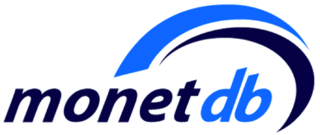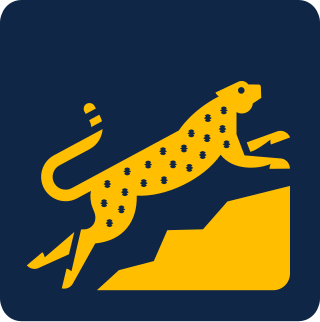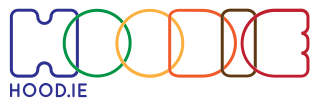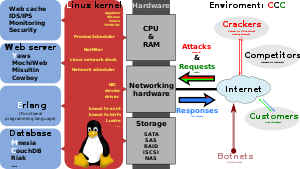Berkeley DB (BDB) is an embedded database software library for key/value data, historically significant in open source software. Berkeley DB is written in C with API bindings for many other programming languages. BDB stores arbitrary key/data pairs as byte arrays, and supports multiple data items for a single key. Berkeley DB is not a relational database, although it has database features including database transactions, multiversion concurrency control and write-ahead logging. BDB runs on a wide variety of operating systems including most Unix-like and Windows systems, and real-time operating systems.

MySQL is an open-source relational database management system (RDBMS). Its name is a combination of "My", the name of co-founder Michael Widenius's daughter My, and "SQL", the acronym for Structured Query Language. A relational database organizes data into one or more data tables in which data may be related to each other; these relations help structure the data. SQL is a language that programmers use to create, modify and extract data from the relational database, as well as control user access to the database. In addition to relational databases and SQL, an RDBMS like MySQL works with an operating system to implement a relational database in a computer's storage system, manages users, allows for network access and facilitates testing database integrity and creation of backups.

Ingres Database is a proprietary SQL relational database management system intended to support large commercial and government applications.

OpenLDAP is a free, open-source implementation of the Lightweight Directory Access Protocol (LDAP) developed by the OpenLDAP Project. It is released under its own BSD-style license called the OpenLDAP Public License.

MonetDB is an open-source column-oriented relational database management system (RDBMS) originally developed at the Centrum Wiskunde & Informatica (CWI) in the Netherlands. It is designed to provide high performance on complex queries against large databases, such as combining tables with hundreds of columns and millions of rows. MonetDB has been applied in high-performance applications for online analytical processing, data mining, geographic information system (GIS), Resource Description Framework (RDF), text retrieval and sequence alignment processing.
In computing, a solution stack or software stack is a set of software subsystems or components needed to create a complete platform such that no additional software is needed to support applications. Applications are said to "run on" or "run on top of" the resulting platform.

Virtuoso Universal Server is a middleware and database engine hybrid that combines the functionality of a traditional relational database management system (RDBMS), object–relational database (ORDBMS), virtual database, RDF, XML, free-text, web application server and file server functionality in a single system. Rather than have dedicated servers for each of the aforementioned functionality realms, Virtuoso is a "universal server"; it enables a single multithreaded server process that implements multiple protocols. The free and open source edition of Virtuoso Universal Server is also known as OpenLink Virtuoso. The software has been developed by OpenLink Software with Kingsley Uyi Idehen and Orri Erling as the chief software architects.
The SQuirreL SQL Client is a database administration tool. It uses JDBC to allow users to explore and interact with databases via a JDBC driver. It provides an editor that offers code completion and syntax highlighting for standard SQL. It also provides a plugin architecture that allows plugin writers to modify much of the application's behavior to provide database-specific functionality or features that are database-independent. As this desktop application is written entirely in Java with Swing UI components, it should run on any platform that has a JVM.
An embedded database system is a database management system (DBMS) which is tightly integrated with an application software; it is embedded in the application. It is a broad technology category that includes:

Drizzle is a discontinued free software/open-source relational database management system (DBMS) that was forked from the now-defunct 6.0 development branch of the MySQL DBMS.

LYME and LYCE are software stacks composed entirely of free and open-source software to build high-availability heavy duty dynamic web pages. The stacks are composed of:
OTP is a collection of useful middleware, libraries, and tools written in the Erlang programming language. It is an integral part of the open-source distribution of Erlang. The name OTP was originally an acronym for Open Telecom Platform, which was a branding attempt before Ericsson released Erlang/OTP as open source. However neither Erlang nor OTP is specific to telecom applications.
LevelDB is an open-source on-disk key-value store written by Google fellows Jeffrey Dean and Sanjay Ghemawat. Inspired by Bigtable, LevelDB source code is hosted on GitHub under the New BSD License and has been ported to a variety of Unix-based systems, macOS, Windows, and Android.
Elliptics is a distributed key–value data storage with open source code. By default it is a classic distributed hash table (DHT) with multiple replicas put in different groups. Elliptics was created to meet requirements of multi-datacenter and physically distributed storage locations when storing huge amount of medium and large files.
Lightning Memory-Mapped Database (LMDB) is an embedded transactional database in the form of a key-value store. LMDB is written in C with API bindings for several programming languages. LMDB stores arbitrary key/data pairs as byte arrays, has a range-based search capability, supports multiple data items for a single key and has a special mode for appending records (MDB_APPEND) without checking for consistency. LMDB is not a relational database, it is strictly a key-value store like Berkeley DB and DBM.
SequoiaDB is a multi-model NewSQL database.
The following outline is provided as an overview of and topical guide to MySQL:

RocksDB is a high performance embedded database for key-value data. It is a fork of Google's LevelDB optimized to exploit multi-core processors (CPUs), and make efficient use of fast storage, such as solid-state drives (SSD), for input/output (I/O) bound workloads. It is based on a log-structured merge-tree data structure. It is written in C++ and provides official language bindings for C++, C, and Java. Many third-party language bindings exist. RocksDB is free and open-source software, released originally under a BSD 3-clause license. However, in July 2017 the project was migrated to a dual license of both Apache 2.0 and GPLv2 license. This change helped its adoption in Apache Software Foundation's projects after blacklist of the previous BSD+Patents license clause.

In computing, Hoodie is an open-source JavaScript package, that enables offline-first, front-end web development by providing a complete backend infrastructure. It aims to allow developers to rapidly develop web applications using only front-end code by providing a backend based on Node.js and Apache CouchDB. It runs on many Unix-like systems as well as on Microsoft Windows.
YDB is a distributed SQL database management system (DBMS) developed by Yandex, available as open-source technology.








